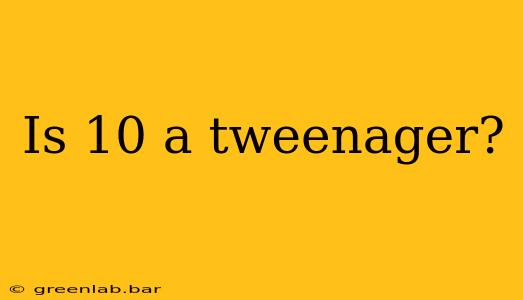Is 10 a Tweenager? Navigating the Age Ranges of Childhood
The term "tweenager" is a blend of "tween" and "teenager," suggesting a transitional phase between childhood and adolescence. But where exactly does this phase begin and end? Is 10 a tweenager? The answer isn't a simple yes or no, as the definition of "tween" is somewhat fluid and culturally influenced.
Defining the Tween Years: A Fuzzy Boundary
While there's no universally agreed-upon age range, most sources place the tween years somewhere between ages 8 and 12. This means that a 10-year-old falls squarely within the generally accepted tween age range. However, it's crucial to remember that development varies significantly between individuals.
Physical, Cognitive, and Social Development at Age 10
A 10-year-old is likely experiencing several key developmental shifts:
- Physical Changes: While puberty may not have fully begun, some children might show early signs like growth spurts or changes in body composition. This physical development can contribute to emotional and social shifts.
- Cognitive Development: Ten-year-olds are usually developing more advanced reasoning skills, becoming more independent in their thinking, and grappling with more complex concepts. Their ability to understand abstract ideas and engage in more nuanced conversations is growing.
- Social Development: Social circles expand beyond family and close friends. Peer relationships become increasingly important, with a growing focus on fitting in and navigating social dynamics. This can lead to increased self-awareness and sensitivity to social cues.
Why the Age Range is Debatable
The fuzziness around the tween years stems from the fact that development isn't a linear process. Some children may show signs of adolescence earlier than others, while others mature more gradually. Factors like genetics, environment, and individual temperament all play a role.
Therefore, labeling a 10-year-old as a "tweenager" is more of a general categorization than a precise scientific definition. It highlights the transitional phase they are likely experiencing, a period of significant change and development bridging childhood and the teenage years.
Understanding Individual Differences
Instead of focusing rigidly on age ranges, it's more beneficial to understand the individual characteristics of a child. A 10-year-old might exhibit some typical tween characteristics, or they might still strongly identify with childhood behaviors. Parents and caregivers should focus on providing support and guidance based on the individual needs and developmental stage of the child rather than adhering strictly to age-based labels.
Conclusion: Context Matters
In short, while a 10-year-old generally falls within the age range commonly associated with "tweenagers," it's essential to recognize the significant individual variability in development. The term "tweenager" provides a useful framework for understanding this transitional period, but it shouldn't be used as a rigid box to categorize every child of that age. Focus on the individual child's needs and development rather than strictly adhering to age-based labels.

